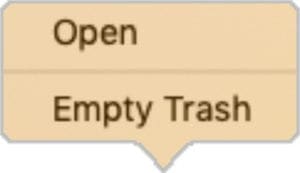

If someone use a recovery software on your Mac before the files are overwritten, they could scan out the deleted files. That's why you need secure empty trash feature, which make the files unrecoverable by writing a series of meaningless ones and zeroes over deleted files. The secure empty trash feature used to be available on OS X Yosemite and earlier. Secure Empty Trash on OS X Yosemite and Earlier But since El Capitan, Apple has cut the feature because it is can not work on flash storage, such as SSD (which is adopted by Apple to its new Mac/MacBook models.) Therefore, if your Mac/MacBook are running on El Capitan or later, you'll need other ways to empty the Trash securely. To empty the Trash securely by default, choose Finder > Preferences > Advanced, then select "Empty Trash securely." If your Mac/MacBook runs on OS X 10.10 Yosemite or earlier, you can use the built in secure empty trash feature easily:ĭrag the files into the Trash, then choose Finder > Secure Empty Trash. Securely Empty Trash on OX El Capitan with Terminal You should notice that using secure empty trash feature to delete files will takes a bit longer than simply emptying the Trash. Since secure empty trash feature has been removed from OX 10.11 El Capitan, you can use terminal command to securely clean up the Trash. Type the command: srm -v followed by a space. How to Securely Remove a File from OS X El Capitan. Please don't leave out the space and do not press Enter at this point. #FORCE EMPTY TRASH MAC HIGH SIERRA HOW TO# Start by finding the file you want to delete in finder. Open a Terminal window (Command + Space, type terminal) 3. Type the srm -v command in the terminal window then drag your file from the finder window to the terminal window to add the path. Hitting enter after typing the full command. Then drag a file from Finder to the Terminal window, the command would look like this:Ĭlick Enter. However, the srm -v command was abandoned by macOS Sierra.

So Sierra users can't use the Terminal method, either. To secure your files on macOS Sierra, you're recommended to encrypted your whole disk with FileVault.

#FORCE EMPTY TRASH MAC HIGH SIERRA FULL#.#FORCE EMPTY TRASH MAC HIGH SIERRA HOW TO#.


 0 kommentar(er)
0 kommentar(er)
